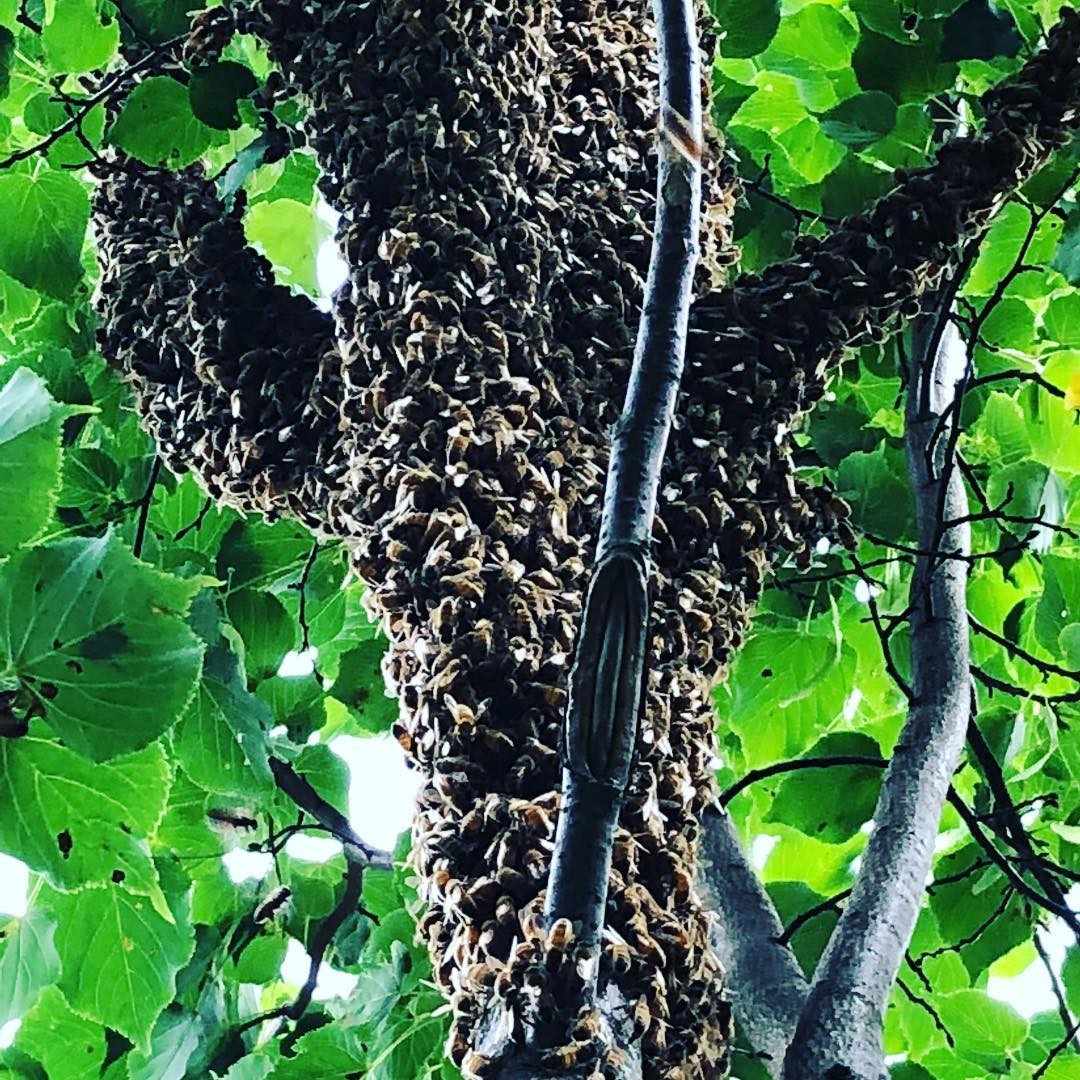|
Imagine if you were running a successful business and your top leadership or producers along with 50% of the staff decided to pick up and leave one day. Making matters worse, the departing group raided your inventory and took a good portion with them when they left the company. The investors and or owner in the company would not be happy. That is what happens when a honey bee hive swarms.
Swarm Basics A honey bee swarm is the natural process whereby the hive splits or reproduces. The honey bees (not the queen) make a collective decision to pick up and leave. In the days preceding the swarm, the queen slows down her brood making duties and the workers make a series of swarm cells, which are queens that will fight it out to replace the departing queen. On the day of the swarm, the workers that are leaving chase the queen out of the hive where she flies a short distance to a site where the departing honey bees will cluster. The cluster then sends out scout bees in various directions. The scouts search out new hive locations and bring back the information to the cluster. The new location could be a hole in a tree, the side of an old barn, or a swarm trap placed by the beekeeper. The cluster actually votes on the locations until they come to the winning location. Once it is decided, the cluster of bees flies off to their new home. Destined for Failure Back in the olden days (before varroa and tracheal mites), this wasn't such a bad thing. The bees would set up in a tree and build out a nice little home that would become a working feral colony. Old timers love to talk about secret bee trees that they knew about in the woods that housed generations of bees. Unfortunately, those times are long gone. In New England a feral colony is not going to last long without a save from a beekeeper. Varroa is likely going to kill the hive within a couple of years if not sooner. Meanwhile Back at the Old Hive The old hive is now scrambling to make things right. The new queens will start emerging and fight out for dominance. In some cases the hive might throw a secondary swarm with one of the new queens. Either way it typically is a hot mess for the beekeeper to manage. The hive now needs to be replenished and the new queen must be established. A beekeeper will typically look to introduce their own queen from an known queen rearing facility or supplier. Some beekeepers may elect to have one of the emerging queens become the new queen but that involves the risk of the queen not being properly mated or having it not return from its mating flight. If that occurs, there is a good chance the hive will fail. Swarms Happen There are a number of things that can be done to prevent swarms. What we like to do is split large colonies that have over wintered early in the spring or after the first honey flow. The earlier the split the better. We also make sure the hives have plenty of room but not too much that makes it hard for the bees to properly patrol the hive. We also try to re-arrange frames so that the bees do not have the sense that they are bound by brood or honey. Finally, after we do all these things and inspect the hives on a regular basis - we always have a swarm. They just happen even if we did everything right. The swarm in the caption was from a hive that was identified as a swarm risk. The old queen was moved off to a new hive along with 5 frames of bees, a new queen was introduced, a false swarm was done by the beekeeper and the hive was arranged with plenty of new space. And they still took off a few weeks later with the new queen. Clearly the decision to swarm which was likely made weeks prior to the swarm itself was still in place with the workers. Off they went. So it can be discouraging but it is not the end of the world. If you can't capture them yourself the next best thing is if they are captured by another beekeeper. If not, the new business venture is going to fail within a few years. #seabeehoney #swarmshappen
0 Comments
|
Details
SEABEE HONEY BLOGAuthorA beekeeper in New Hampshire [email protected] Archives
December 2023
Categories
All
|


 RSS Feed
RSS Feed